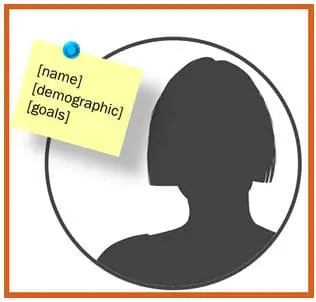 Last week I wrote about gathering data for creating buyer personas, and highlighted interviewing as the key data-gathering tool. This is the second of the two-part series on creating buyer personas.
Last week I wrote about gathering data for creating buyer personas, and highlighted interviewing as the key data-gathering tool. This is the second of the two-part series on creating buyer personas.
22 Questions to Ask in Persona Interviews
Now it’s time to actually interview people. After some thank-yous and a brief opening conversation to build a relationship, it’s time to jump into your questions.
Your Role
- What is your job title? Job role?
- How is your job measured?
- What does a typical day look like?
- What skills are required to do your job?
- What knowledge and tools do you use in your job?
- Who do you report to? How reports to you?
Company
- In which industry or industries does your company work?
- What is the size of your company (revenue, employees)?
- What other locations does you company have?
Goals
- What are your responsible for?
- How do you measure progress/success toward your goals?
- What does it mean to be successful in your role?
Challenges
- What are your biggest challenges?
Watering Holes
- How do you learn about new information for your job?
- What publications or blogs do you read?
- What associations and social networks do you belong to?
Personal Background
- Describe your personal demographics (if appropriate, ask their age, whether they’re married, if they have children).
- Describe your educational background. What level of education did you complete? Which schools did you attend, and what did you study?
- Describe your career path. How did you end up where you are today?
Shopping preferences
- How do you prefer to interact with vendors (email, phone, in person)?
- Do you use the internet to research vendors or products? If yes, how do you search for information?
- Describe a recent purchase. Why did you consider a purchase, what was the evaluation process, and how did you decide to purchase that product or service?
The best tip for running a successful persona interview
Ask “Why?” or “Tell me more about that.” These are the follow-up questions to each of the questions above. Through these interviews, you want to understand the person’s goals and behaviors, and what drives them. You don’t care if they measure hits or unique visitors — you care about WHY they do this (like to have a number they understand to report to their boss). Find out what drives their behaviors, and you’re a long way towards creating a powerful buyer persona. You’ll more by asking “Why?” than by asking more superficial questions.
Create your persona from your research
Once you’ve done your interviews, you’ll have a lot of data about your customers or potential customers. The next step is to distill this information into a story that people can readily understand.
Identify patterns among the different interviewees, and develop at least one primary persona. Share that persona with the rest of the company. Here’s what you’ll do:
Fill in basic demographic information
Fill in the basic demographic information you gathered, or create a quick survey to gather information you weren’t comfortable asking for. It might be helpful to fill in some buzzwords and mannerisms of your persona that you picked up on during your conversations. This makes it easier for people in Sales to quickly identify personas when they’re talking to prospects.
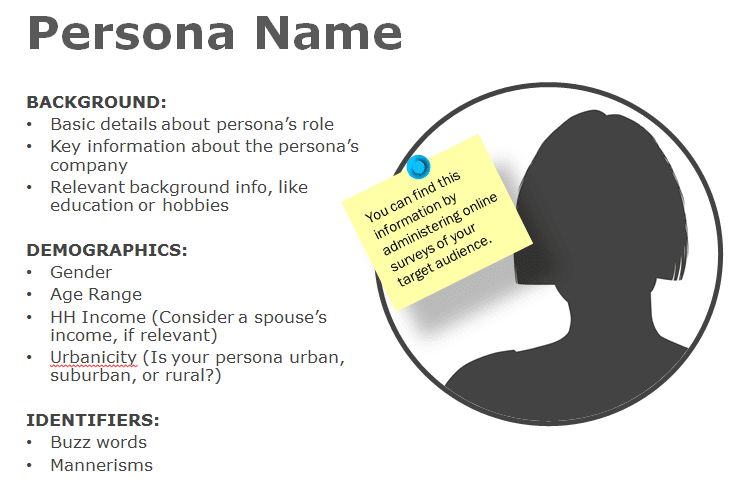
Share what you’ve learned about your persona’s motivations
You asked “why” a lot during your interviews — here is where you’ll share the responses. What keeps your persona up at night? Tie all this together by telling people how your company can help them.
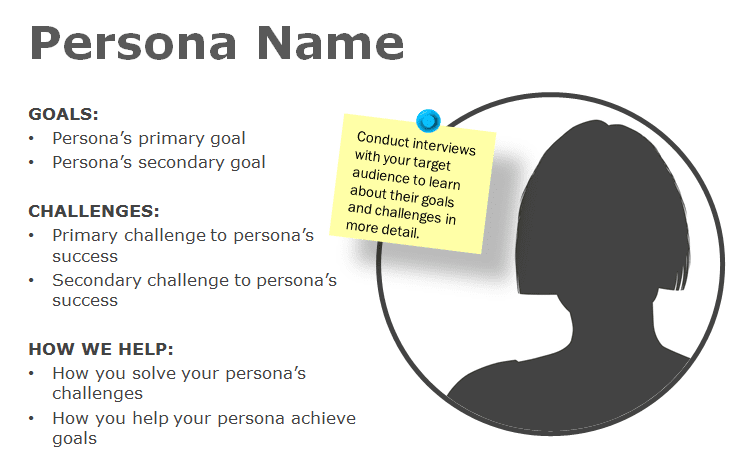
Help your sales team prepare for conversations with your personas
Include some real quotes from your interviews that exemplify what your personas are concerned about, who they are, and what they want. Then bullet point the objections they might raise so your sales team is prepared to address those during their conversations.
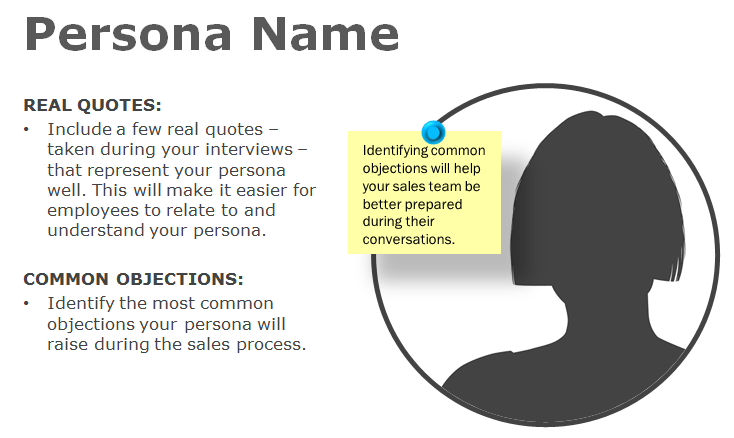 Help with messaging
Help with messaging
Tell people how to talk about your solution with your persona. This includes the vernacular you should use, as well as a more general elevator pitch that positions your solution in a way that resonates with your persona. This will help to ensure that everyone in your company is speaking the same language when they’re having conversations with leads and customers.
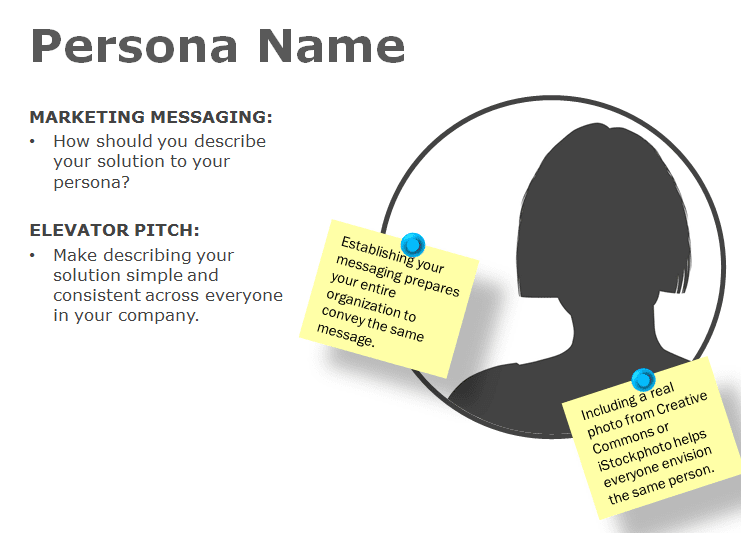
Give your persona a name
Finally, make sure you name your persona and include a photo so everyone knows who she is and what she looks like. You can find lots of photos that you can use at no cost. Give the persona a name like Daughter Dorothy, or Brother Ben. It seems silly, but it really helps to keep your various personas separate, and provides a quick way to reference them when talking with other in your company.




